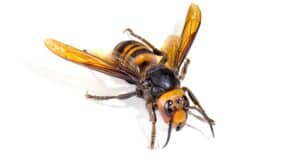Wasps are common across the United States, especially in the summer, and reportedly cause 62 sting-related deaths on average each year. Every year, picnic-goers and outdoor events get overrun by swarming wasps nationwide, making use of outdoor spaces challenging or even impossible. As one of nature’s most fear-inducing pests, knowing how to get rid of various types of wasps is a must.
If you’ve noticed wasps flying around your space, never fear. We’ve assembled this handy selection of tips to help you quickly eliminate these dangerous pests and prevent further infestations or potential stings.

There are a reported 62 sting-related deaths on average in the United States each year.
©JorgeOrtiz_1976/Shutterstock.com
How to Identify Wasps
Wasps, hornets, yellow jackets, and their various species have painful stingers and a vengeful attitude if they feel threatened. When they perceive a threat, these insects will appear in swarms, immediately attacking and stinging any human or pet that gets close. Their stingers’ danger multiplies for anyone allergic to their venom.
Some species of wasp, however, are more docile than others, while others are more aggressive. Some, like mud daubers, are even helpful pest controls, eating spiders and other unwanted insects. With such varied behaviors, it’s important to identify what wasps are in your yard before dealing with them. Here are some of the most common wasp types:
- Yellow Jackets: These bee-sized wasps are identifiable by their yellow and black markings, for which they are named. Yellow jackets exist worldwide, but they’re particularly common in the southeastern United States.
- Hornets: Over 20 species of hornet exist worldwide, but they’re usually black with light yellow or white stripes that are more distinct than the more petite yellow jackets.
- Mud Daubers: These black wasps with bright yellow markings are generally more docile than their cousins. These bugs have long, thin bodies that are distinct from other wasps varieties and grow to between half an inch to one inch long.
- Paper Wasps: Slightly larger than yellow jackets, paper wasps’ bodies are black or brown with yellow and sometimes red markings. These bugs build their nests near buildings, and they are much thinner than other wasp nests; usually on one comb thick and meant for breeding.
A quick note: while wasps are distinct insects, they are often confused with honey bees, which are a keystone species and critical members of the environment. It’s vital to let honeybees do their thing, whereas wasps are pests and should be removed from your property.
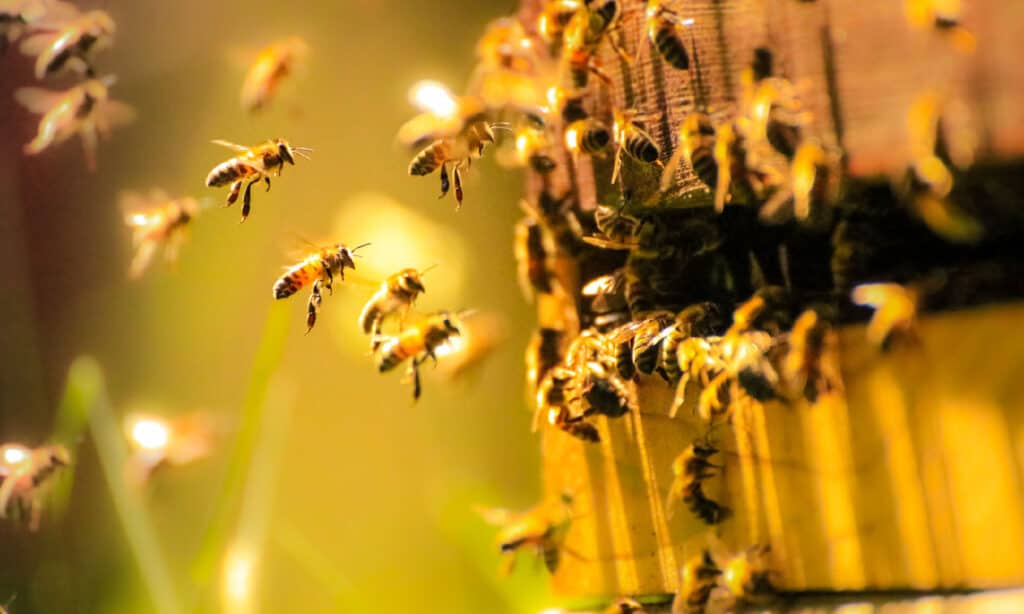
Wasps are not to be confused with honey bees which are critical members of the environment that need to be protected.
©iStock.com/William Jones-Warner
Step 1: Hang Wasp Traps to Kill Wasps

Wasp traps are inexpensive and effective.
©GeorgeVieiraSilva/Shutterstock.com
Wasp traps are one of the first lines of defense when it comes to getting rid of wasps. These traps contain a sugary liquid that attracts wasps, luring them into the trap. When they crawl inside, they get stuck and eventually drown.
Wasp traps are effective, but they can accumulate dead wasps – taking up space and producing an unseemly sight. Be sure to replace them frequently and hang them away from common outdoor gathering spaces.
You can also build a homemade wasp trap with items around the house. Cut the top off a soda bottle and pour in a few inches of juice or soda mixed with dish liquid at the bottom. Invert the top with the cap removed, allowing it to act as a funnel, and replace it on the bottle. Hang the homemade trap in your yard, away from frequented gathering spots.
Step 2: Get Rid of Wasp Food Sources
Wasp queens and workers emerge from winter hibernation hungry and buzzing for all the food they can find. If there are food sources in your yard, such as grubs, spiders, or other tantalizing insect prey, they’ll likely stick around.
Removing other pests in your yard is one of the best ways to prevent wasps from invading. It’s also helpful to remove fallen or rotting fruit or berries from outdoor trees and clean any food scraps from outdoor meals as soon as possible. Tightly seal outdoor garbage pins and cover compost piles – wasps aren’t picky about what they eat, so keep it all tightly under wraps.
Step 3: Spray Wasp Nests
If you discover a wasp nest on your property, getting rid of it may seem simple. Don’t be fooled, however, as angered wasps will likely attack. Before removing a nest, it’s a good idea to spray the wasp nest with a store-bought wasp killer at least 24 hours prior. If you still see active wasps abuzz, respray the nest and wait.
After the wasps seem quiet, approach the nest in the evening hours to confirm the bugs are dead. Throw a garbage bag around the nest and gently pull the nest from its nook, sealing the bag around it. Toss the nest and bag into the outdoor trash and seal both with a tight-fitted lid.
If the nest is in a hard-to-reach place or seems especially populated, it may be better to call a professional exterminator.
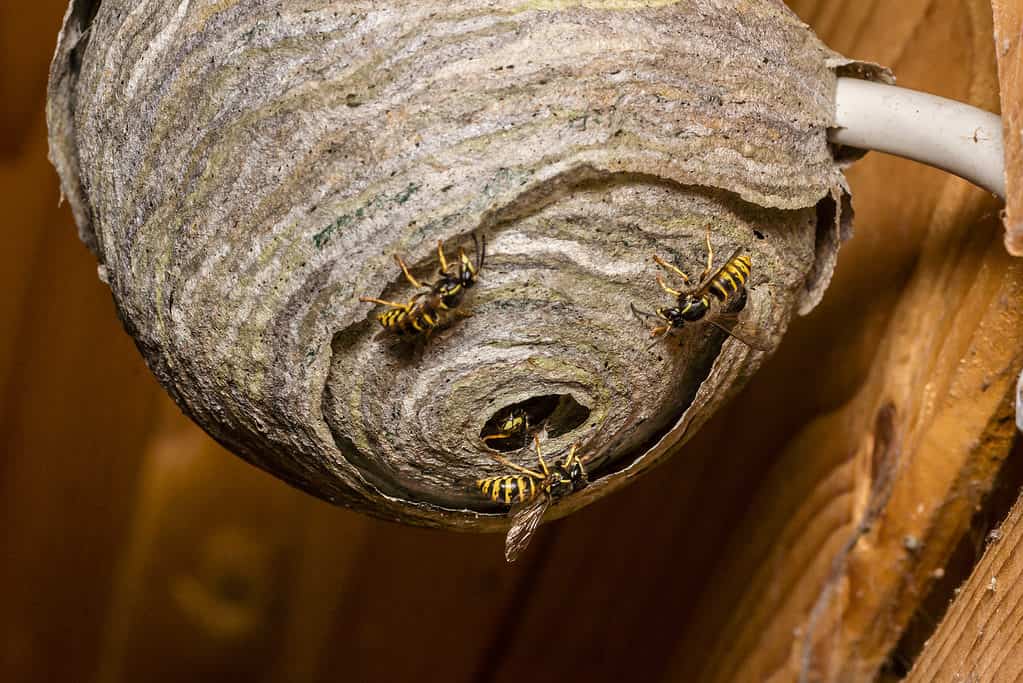
Spray the wasp nest with a store-bought wasp killer at least 24 hours prior to removing, but if highly populated, consider calling a professional.
©iStock.com/SKatzenberger
Step 4: Use DIY Sprays and Preventatives
Some people prefer a greener solution to kill wasps than store-bought insecticides. A cheap and highly effective solution is a simple mixture of dish soap and water. Blend two tablespoons of dish soap into a water-filled spray bottle and shake. Spray the mixture onto nests or individual wasps: the soap will clog the bugs’ pores and kill them immediately.
Another homemade repellant can be crafted by mixing two cups of sugar, two cups of apple cider vinegar, and one cup of water. Stir the mixture and place the bowl near the wasps’ nests, allowing it to attack and drown the insects.
Step 5: Make Your Place Inhospitable
One of the best ways to get rid of wasps is to make your backyard or property unlivable in the first place. Treat potential or future nest areas with liquid insecticides, which you can purchase at a home or hardware store. Spray any area you think wasps would build a nest, including any shed, patio, wooden fence, pool deck, or play set. These chemicals help prevent future nest building and should keep wasp colonies far from your home.
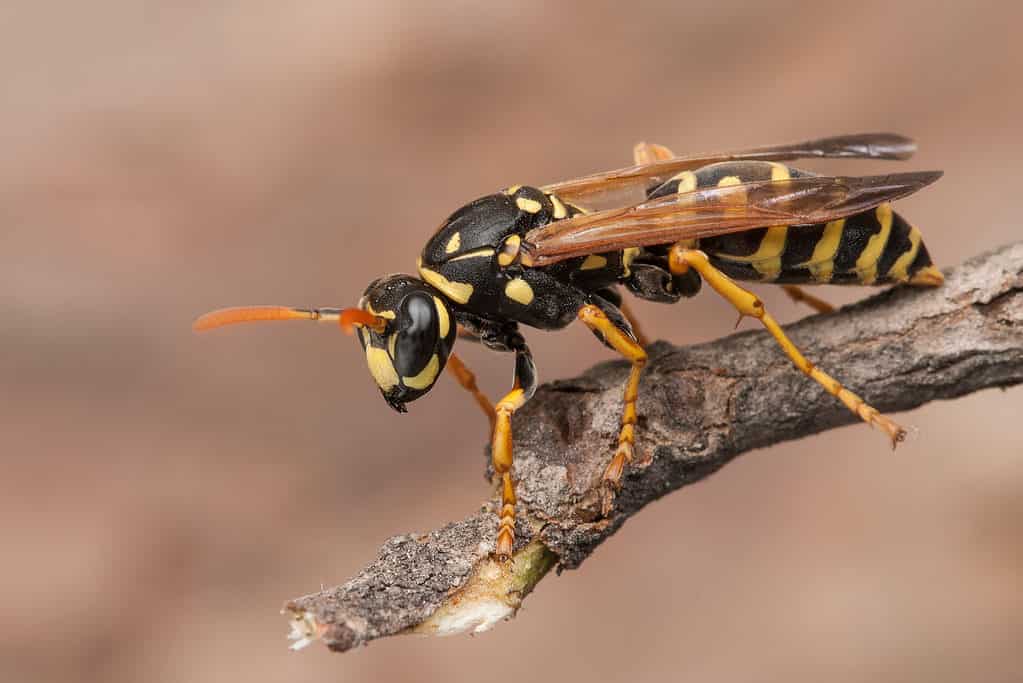
Treating potential nest areas with liquid insecticides can help to make your property and yard unlivable for wasps.
©Pavel Krasensky/Shutterstock.com
Step 6: Remove What Attracts Wasps
Wasps are far from picky eaters and will gladly take advantage of someone’s free food or leftovers. These insects seek protein-based foods, hunting for meat scraps or leftover grill drippings from recent barbecues. It’s tricky to keep wasps from noticing the smell of food overall, but you can discourage them from sticking around by covering cooked food and removing spills immediately.
Strong scents and flowers are also attractive to wasps, drawn to the sugary scents. If you have a floral garden or aromatic perfume, these may also lure wasps to your home.
Step 7: Call a Professional to Kill the Wasps
While the above steps are helpful in a pinch, wasps are dangerous creatures that can cause severe damage when provoked, depending on the species. Larger colonies, in particular, or nests in hard-to-reach-or-find places can be nearly impossible to handle independently.
In these instances, the best option is to call a professional pest management company.
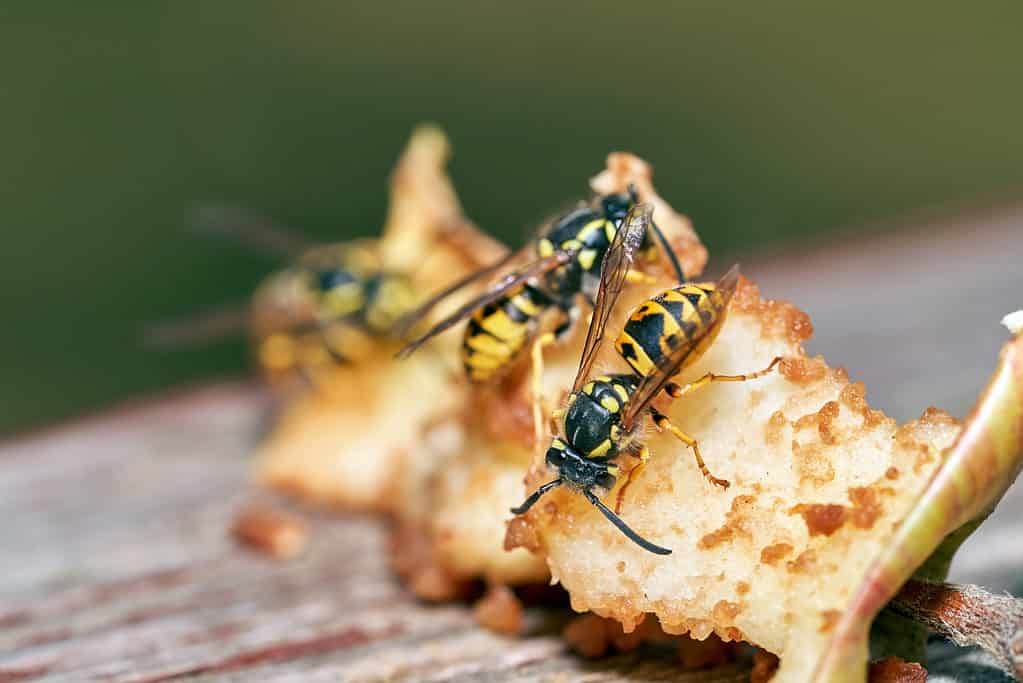
Wasps will gladly take advantage of someone’s free food or leftovers so it is important to cover or remove food when possible.
©Jonas Vegele/Shutterstock.com
What Colors Repel Wasps?
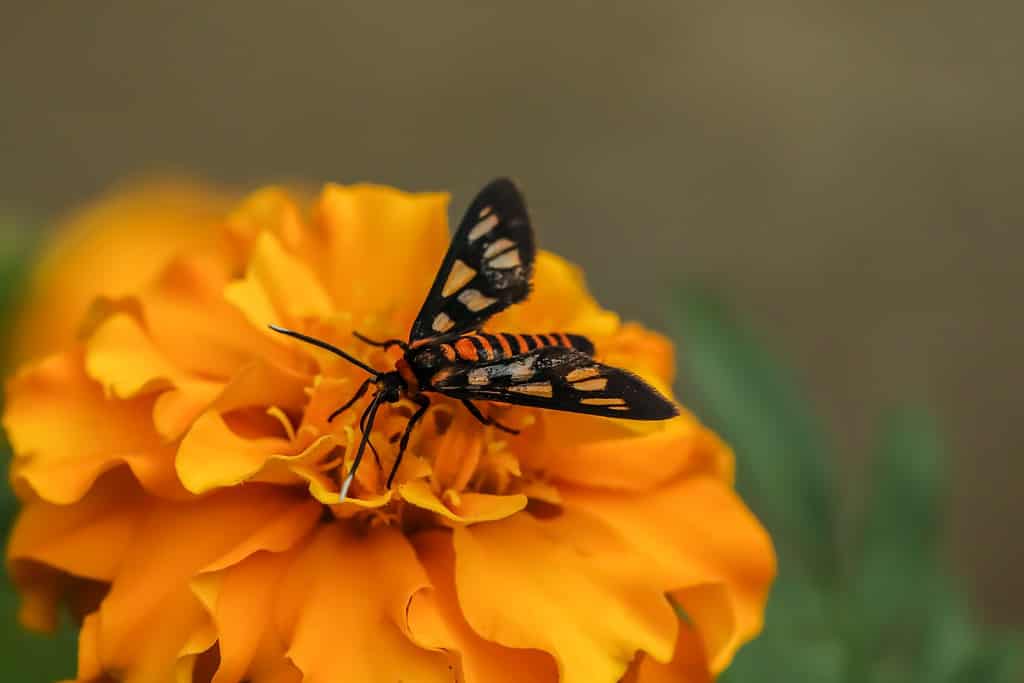
Wasps are drawn to bright colors like orange and yellow.
©Helza Nitrisia/Shutterstock.com
Since wasps can see colors on the UV spectrum, it is plausible that certain colors will attract and repel wasps. Light colors like white, yellow, and orange will draw wasps since they are the same colors of attractive flowers promising nectar. A wasp may be drawn to a person wearing floral colors. Darker colors, however, like dark blue, green, and black will not attract wasps. So, if you’re trying to keep wasps away from your porch, you may want to paint it dark blue or green.
The Bottom Line
Wasps are menacing pests that can quickly dampen the mood at outdoor gatherings and make outdoor spaces fraught with danger. Prevention is the best measure, but thankfully, the above steps provide an essential guide to immediately killing or getting rid of wasps on your property.
The photo featured at the top of this post is © FCerez/Shutterstock.com
Thank you for reading! Have some feedback for us? Contact the AZ Animals editorial team.





